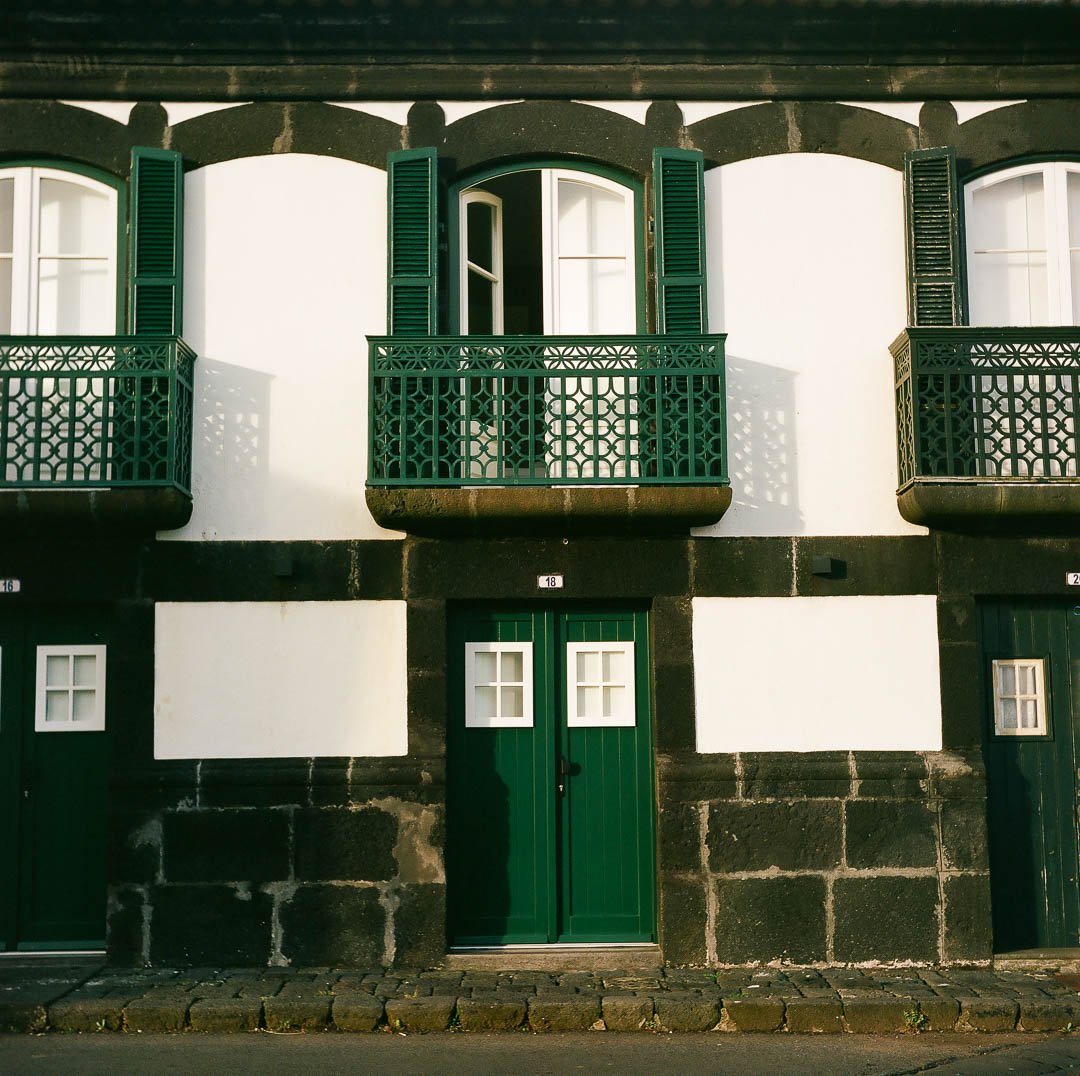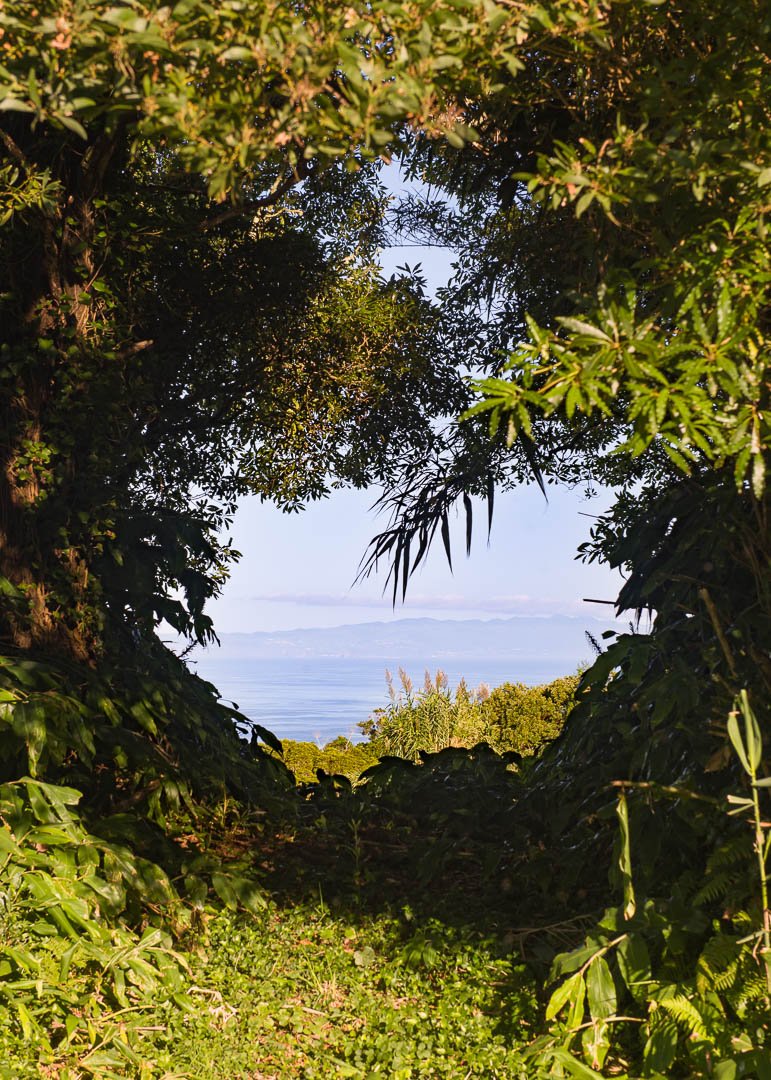Azores, Graciosa and Faial (3 of 4)
Santa Cruz da Graciosa (all)
Graciosa Island
I am drawn to remote, quiet places, so Graciosa is a pure delight. When I land at the airport, there is no evidence of taxis, so an islander picking up her aunt from California gives me a lift into town. They share stories of the Graciosa before tourists started coming, I forgot to ask how long ago that was, but I cannot imagine it was too long ago. I stay at the Boa Hostel, Graciosa and cannot recommend it enough. Mari is endlessly helpful, the rooms, though small, and common area are lovely and if you book it ahead you can rent a moped or bike from the Hostel.
The largest town in Graciosa, Santa Cruz da Graciosa is a beautiful, whitewashed town strung along a seawall and wrapped around a sleepy town square. The two open cisterns in the town square are evidence of Azorean history of droughts. Near the town square I learn all this and more of the island history at the extremely nice Museum of Graciosa. Because it was off season, restaurant options are slim, but Restaurant Jale has delicious fresh fish and desserts. I am never sure what the fish is in English, although I am pointed to a poster on the wall, but they are always fresh and delicious. It is quickly evident to me how few fish we really eat at home, and how many the Azorean do. I also make some nice meals in the lovely hostel kitchen.
Santa Cruz da Graciosa
Locals sit at the many coffee shops in Santa Cruz da Graciosa and chat throughout the day. I frequent the Grafil Coffee Bar in the town square, which has great coffee and snacks. The Azores has amazing strong coffee, and by Day 5 in the Azores I am start to feel I might becoming entirely made of cheese, wine, and coffee; there are far worse things. By Day 14 I am sure, I do.
The pace of life on Graciosa is extremely sleepy, so I have a lot of time to take it all in and simply be. I love it. Despite moving slow, to be able to cover more of the island, I rent an old but serviceable red moped from the hostel. I feel like a Wes Anderson character as I put through the town center, always a bit lost on the one-way cobbled streets, but not particularly worried about it, except for mild embarrassment every time I wrapped back through the town center. There are no cars, no action, pretty much total quiet, so no doubt locals enjoying their slow coffee at the outdoor tables note “the lost American. Again.” There are only two other tourist groups who were not visiting family, both from Portugal, during my time in Graciosa. It is a bit like stepping out of modern time entirely.
My only regret visiting Graciosa in the off season is that the Termas do Carapacho are closed, in spite saying it is open online. I will travel far for hot springs, the health benefits and the role in human history fascinate me, and this is a big part of my interest in the Azorean Islands. But with the Termas closed, I spend a wonderful day swimming at the natural swimming pool just below to the hot springs, a series of man-made piers blocking the waves and allowing the sea to warm somewhat. The bathing site is a gathering place for the local community, and I am the only outsider. It reminds me of my childhood growing up in a small town where everyone knew everyone else, parents and grandparents, and watched out for each other’s children. On Graciosa, old men lounge against the sea wall chatting high above, watching the wild antics of the children. I warm up in the bright sunlight after a dip and lazily watch the seabirds circling the spectacular cliffs above, the chatter of families and joyful yelps of children bringing me home. Occasionally I try out my atrocious Portuguese on people who are trying to understand what brought me to Graciosa.
Entrance museum of Furnas do Enoxfre Calidera
As sorry as I am to miss the hot springs, it is surreal to have the cavern Furnas do Enoxfre Caldiera entirely to myself. That is once I finally find my way in. Again, like some absurd movie character, I ride my moped straight up the side of the ancient volcano, the Atlantic glistening far, far below me, not a soul in sight. I circle the rim of the caldera more than once, before realizing the road on the map clearly enters the caldera through a tunnel far below me and make my way back down the volcano. Emerging from the tunnel, inside the caldera feels Jurassic, I wouldn’t be surprised to see a Tetradecyl flying through the mist under the cliffs hung with greenery high above me. This sense that I traveled back in time is only heightened because I am entirely alone. The only thing breaking the illusion are the simple stone walls, common across all the islands. In spite of the impression of untouched sub tropical wilderness throughout much of the islands, the Azores are in fact heavily cultivated, with minimal flora original the islands, including the jungle in the caldera which was planted in last century.
Furnas do Enoxfre Calidera
I walk through the beautiful modernist building which provides entry to the cave, descending the staircases into the football stadium sized cavern. The lake itself is off limits as the gases beside it can reach deadly level, but a tiny rowboat in the lake gives a sense of scale to the enormous cavern. Entirely alone I stand in awe at the power of the earth, and the beauty of her architecture.
On my way back to town, I stop off at the nearby lava tubes, Furna da Maria Encantada and the Furna do Abel. Both are fascinating examples of geology which you can walk through and show the power of the earth. I love that the latter is simply located by the road in a farmer’s field and feels a bit like entering Middle Earth.
I did not stay here, but another housing option on Graciosa with good reviews; Inatel Graciosa Hotel.
Faial Island
Faial island is well worth a visit and the town of Horta are renowned sailing stop over. Unfortunately, I feel under the weather so take it easy during my time in Faial instead of taking on some of the activities I had planned.
ubiquitous hydrangea
View of Sao Jorge Island from Faial
I stay at the Patio Ecolodge on the north side of the island, where the owners specialize in trail rides, although in the off season you need to book ahead of time. The modernist apartment is perfect and the food in the hotel restaurant is delicious. I hoped to visit Restaurant O Esconderijo nearby, but they just closed for the season, although the jungle garden looks delightful so perhaps a future visit. I am on foot on Faial, and love the Patio food, so don’t rally any further afield, but the nearby Aldina Restaurant and Bar also looks amazing. One afternoon, I hike up through the conservation areas high up the mountain slopes above, reveling in the lush plants I recognized from high end florist shops, Birds of Paradise, Monstera, and all types of Ferns, growing wild by the road or in fields. The intense moisture and constant rains are the perfect environment for plants to go wild, although the Azores are known for their hydrangeas.
Porto Pim Beach
Faial is also the site of a 1957 eruption. Visitors can hike the black dunes and learn about the geological event and history of the island at the the Capelinhos Volcano Interpretation Center. This was the most recent eruption in the Azores and spurred a significant emigration from the islands to the US.
Back in town, Porto Pim Beach is located downtown in the old part of Horta, with crystal clear waters the Bay is perfect for swimming, snorkeling, or kayaking, as long as you navigate the Man of War. Just feet from the delightful Porto Pim Apartments, I enjoy lazy afternoons on the beach, joined by free roaming dogs, pets and kindred spirits, they joyfully join me every time I swim and nap with me in the warm sun in between. I walk over to a nearby coffee shop or bakery above the seawall protecting the town from the waters from the bay, when I feel it is time for food.
The conservation area above the bay has spectacular views of Mt Pico and is nice for a walk to see the sunset or rise. But the bays leisure uses bely its dark history. The Azores Ocean Observatory which sits just above the beach at the far end from town now the Whale Factory Museum was once a whale refinery. This practice was common throughout the Azores, brought to the region from the US hungry for whale oil, which the Azores were rich in.
Peter Café Sport in Horta, is a must for any sailor or traveler. This café has been the stop off, resupply and watering hole for trans-Atlantic sailors for 104 years. Although I am a mediocre sailor I head over for lunch as I love a good adventure story. The walls and ceiling are covered with banners of explorers, sailors, and voyages, some the banners, like that of Thor Heyerdahl, famed for his history and hair raising Pacific crossing on the balsa wood raft the Kon-tiki, I recognize, but most I do not, although a knowledgeable sailor probably would. Peters maintains the sailors shop and scrimshaw museum, but the overall experience is what you go for. And even not feeling 100%, my wanderlust is piqued by all the requests for crew tacked above the bar, although none are recent enough to warrant a call.
I did not make it to Almoxarife Beach, but it is a stunning black sand beach, a rarity in the Azores.

















